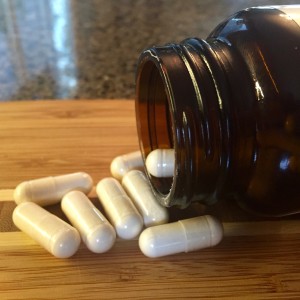 There are times when you have no choice but to take antibiotics to help your body battle against an infection in order to get better. Unfortunately, the downside of taking antibiotics is that they are indiscriminate in what they kill and end up wiping out all of the good bacteria living in our gut. Yes, that is right, we have trillions of bacteria and other organisms living in our intestines and a great majority of them provide a benefit to your body. In all honesty the GI ecosystem is the biggest part of your immune system and it is important to have a healthy biome within your gut. So after a round of antibiotics your gut will need to rebuild everything that was just wiped out.
There are times when you have no choice but to take antibiotics to help your body battle against an infection in order to get better. Unfortunately, the downside of taking antibiotics is that they are indiscriminate in what they kill and end up wiping out all of the good bacteria living in our gut. Yes, that is right, we have trillions of bacteria and other organisms living in our intestines and a great majority of them provide a benefit to your body. In all honesty the GI ecosystem is the biggest part of your immune system and it is important to have a healthy biome within your gut. So after a round of antibiotics your gut will need to rebuild everything that was just wiped out.
There are many different options for rebuilding and fortifying your beneficial bacteria within your gut. When you do this it also improves your immune system. The normal way that most people go about rebuilding their gut after a round of antibiotics is by taking a probiotic pill that contains large colonies of beneficial bacteria. Here are a few things to look at when buying a probiotic:
- The genus, species, and strain (if available) of the microorganism (Lactobacillus planetarium DSM 20246, for example). Most all labels have just the genus and species, but different strains provide different benefits so it’s good to know the strains included.
- The number of organisms contained in a single dose and how often you need to take it. Find one that has at least seven strains and five billion CFU (colony forming units). It is important in to have wide variety of beneficial bacteria and a larger CFU’s to insure you get a good colonies setup in your gut.
- Storage information is very good to know. Some probiotics need to be refrigerated while others need dark cool places. Regardless, you should always keep your probiotic away from moisture and heat.
- Freshness of the probiotic you are buying, or you could say the viability though end of shelf life, to insure the living microbes are in fact still living. Bypass on purchasing probiotics if the label says viable at time of manufacture since that translates to everything is dead by the time it reaches your house. This is very important when looking at yogurt as you want to make sure it states, “live and active cultures.”
- How the pill is coated is important since you want an encapsulated pill or other delayed-ruptured technology to ensure the bacteria survive through your acidic stomach and actually reach your intestines and colon.
- Certification by an independent, reputable, third party. The FDA (Food and Drug Administration) does not regulate most probiotics or supplements so sometimes the labeling might not be accurate. Make sure its been tested independently.
 Beyond the use of pills you can also rebuild your gut by consuming fermented foods such as sauerkraut, kefir, yogurt, or fermented vegetables just to name a few. All of them are great and you can make them for yourself and know what is in it. In later posts I will be detailing different fermented foods that you can make. Here in my house we tend to eat a lot of sauerkraut and drink water kefir on a regular basis to fortify our digestion and immune systems. This year I am going to start playing with more fermented foods since I was gifted a few air locks, crocks, and large fermenting containers. Look forward to new posts on those!
Beyond the use of pills you can also rebuild your gut by consuming fermented foods such as sauerkraut, kefir, yogurt, or fermented vegetables just to name a few. All of them are great and you can make them for yourself and know what is in it. In later posts I will be detailing different fermented foods that you can make. Here in my house we tend to eat a lot of sauerkraut and drink water kefir on a regular basis to fortify our digestion and immune systems. This year I am going to start playing with more fermented foods since I was gifted a few air locks, crocks, and large fermenting containers. Look forward to new posts on those!
As for how I go about making sure my gut flora and fauna are well established after a round of antibiotics is a two pronged approach. First I make sure to take minimum level probiotic (seven strains and five billion CFU) six hours after taking my antibiotic pill(s). I know it seems like a waist of a good probiotic, but it keeps the digestive system working while eradication other infections. I also increase the amount of fermented foods I eat to help bolster the over all system. Each of you will have to experiment and find out what works for you. The important thing is to make sure you rebuild your gut after a round of antibiotics to insure good health.
